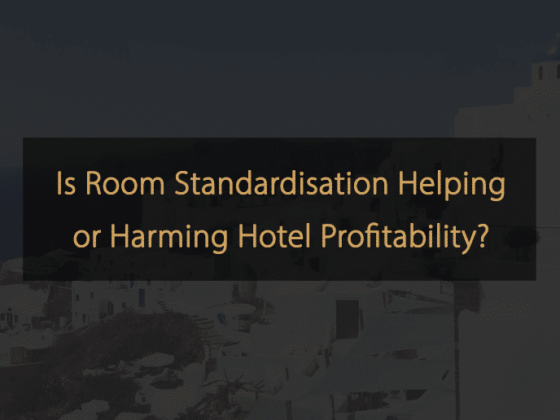
Hotel revenue management has long been relying on complex spreadsheets, occupancy charts, and the relentless push to “fill the rooms.” Many view it as a tactical, joyless task, focused on numbers and detached from the true art of hospitality.
The way we view revenue management is outdated and actively costs hotels money. The traditional definitions we’ve learned have led to widespread misconceptions. These myths lead hoteliers into destructive price wars, cause them to target the wrong customers, and create a false sense of inadequacy for smaller, independent properties.
It’s time for a fundamental shift. Modern revenue management isn’t about complex math; it’s about hospitality and understanding people. To make this change, we must first break down the flawed thinking that holds us back. In this article, we will debunk three of the most damaging myths in revenue management.
We will explore why the goal isn’t to sell capacity but to meet needs, why you should stop trying to create demand and start capturing it, and why smaller hotels not only have a fighting chance but also a clear advantage.
Myth #1: The Goal is to “Sell the Capacity…”
The Reality: The goal is to meet the right customer’s needs.
For decades, every hotelier has learned the textbook definition of revenue management:
“Sell the right capacity, to the right customer,
for the right price, in the right channel, at the right time.”
While it sounds correct, this classic definition has a subtle but profound flaw that has shaped hotel strategy for years. The problem lies with the very first word: capacity.
This definition forces us into a hotel-first mindset. It starts with our inventory—the rooms we have to sell—and makes us ask, “How can we sell all these rooms for the best possible price?” This line of thinking inevitably leads to an obsession with occupancy metrics, pushing us to fill rooms, even if it means deep discounts that eat into our profitability. It frames the guest as a means to an end: filling capacity.
Let’s flip the script with a more powerful, customer-centric definition:
“Revenue Management is understanding and meeting
the right customer’s needs, with the right products,
at the right prices, in the right channels, at the right time
to maximize profits.”
By starting with the customer, the entire objective shifts. The question is no longer “How do we sell this room?” but rather, “What does our ideal guest truly need, and what are they willing to pay for to get it?”
When you focus on meeting customer needs, you unlock entirely new revenue opportunities that go far beyond the room rate. You start creating and selling tailored products:
- The “Relaxation Package” for a couple, bundling a room with a spa credit and late checkout.
- The “Business Traveler Kit,” which includes premium Wi-Fi, a pressing service, and a grab-and-go breakfast for a small premium.
- The “Family Adventure” combines a suite with tickets to a nearby theme park.
The focus on simple RevPAR doesn’t hold up under scrutiny. A customer-first strategy shifts attention to metrics like TRevPAR (Total Revenue Per Available Room), offering a fuller picture. You move from just selling a room to maximizing the total profitable value of each guest relationship.
But the benefits don’t just stop at the checkout folio. When you focus on genuinely meeting a guest’s needs, you create something far more valuable than ancillary revenue: a satisfied guest. These are the guests who leave glowing online reviews, recommend your hotel to friends and colleagues, and return time and again. This powerful word-of-mouth marketing drives future demand and lowers customer acquisition costs, creating a virtuous cycle of profitability that a simple ‘fill the rooms’ strategy can never achieve.
Myth #2: The Hotel’s Job is to Create Demand
The Reality: Your job is to capture the right demand, not create it from scratch.
It’s a familiar scene in any hotel strategy meeting during a slow month: all eyes turn to the marketing and sales team with the impossible request, “We need you to create more demand!”
A fundamental misunderstanding in hospitality drives this common directive. The hard truth is that hotels rarely, if ever, create primary demand. Travelers don’t visit a summer destination in February simply because a hotel offers a discount. They come for a reason: a concert, a business conference, a cultural event, or a family visit. The destination’s appeal generates the initial demand for an overnight stay.
A hotel’s proper role is to skillfully capture its share of the demand that already exists. The game isn’t about creating travelers; it’s about persuading the travelers who are already coming to choose your property over all others.
When hotels miss this crucial distinction, they often rely on the most dangerous tool in their arsenal: aggressive price cuts. They assume that if creating new guests isn’t possible, they can “steal” them from competitors with lower rates. Such strategies almost always backfire, triggering price wars that erode margins for all. No one wins in the race to the bottom—not even the hotel that initiates it.
Instead of trying to out-price the competition, the winning strategy is to out-compete them on value for your ideal guest.
This ties directly back to our new definition of revenue management. By understanding the needs of your target customers, you can focus all your efforts on capturing them more effectively than anyone else.
- What does your ideal business guest truly value? Seamless check-in, a perfect workspace, and fast room service.
- What does your target family need? Kid-friendly amenities, adjoining rooms, and flexible dining options.
Focusing on capturing the right guests is far more profitable than fighting for every guest. It leads to higher ancillary spend and, as we discussed, creates genuinely satisfied guests. Remember, it is always better to have a lower occupancy with high-spending, satisfied guests than a full house secured with profit-destroying low rates.
Myth #3: Revenue Management Is a Game for Big Chains Only
The Reality: Smaller hotels need it more, and they have a secret weapon.
It’s easy to see why this myth persists. When you picture “revenue management,” you might imagine a team of analysts in a corporate high-rise, staring at complex charts—a luxury that a 30-room boutique hotel seemingly can’t afford.
But the reality is the complete opposite. Not only do smaller hotels need a strategic approach to revenue even more than their larger counterparts, but they also possess a powerful advantage that large chains can only dream of.
First, let’s talk about risk. From a pure inventory perspective, the stakes are higher. Mispricing one room in a 30-room hotel affects over 3% of your revenue potential. In a 1,000-room resort, it’s a rounding error. But the risk goes far beyond pricing. In a small hotel, the impact of a single dissatisfied guest is magnified enormously. One devastating online review can seriously damage a small hotel’s reputation, while a large chain can more easily absorb the blow.
This is precisely why the updated, customer-focused definition of revenue management should be a rallying cry for independent hotels. Your goal is not to mimic the big brands by simply managing transactions. It’s to leverage your intimate scale to capture the right guests—the ones whose needs you can meet perfectly, ensuring they leave happy and write glowing reviews.
And this brings us to your secret weapon: agility.
Large hotel chains often separate revenue, marketing, sales, and leadership into distinct departments, creating communication silos that hinder strategy alignment. In contrast, small hotels typically rely on one person or a close-knit team to manage all these activities. Such a setup becomes a superpower, offering a 360-degree view of the business. You can seamlessly align marketing messages with pricing strategies and operational realities. While big brands struggle to coordinate across departments, you pivot quickly, responding to market changes and guest needs with unmatched speed and coherence.
The Future is Customer-Centric Profit
As we’ve seen, the old rules of revenue management are breaking down. The conversation is no longer about defensively filling rooms, fighting pointless price wars, or using tools built only for giant corporations.
The new, more innovative approach takes the offensive. It builds on a simple, robust foundation:
- Start with the customer, not the capacity. By focusing on meeting guest needs, you unlock higher profits and create loyal advocates for your brand.
- Capture the right demand, don’t try to create it. Attract the guests who are the best fit for your hotel, and you’ll win the profitability war, even with a lower occupancy.
- Leverage your unique strengths. For independent hotels, your smaller scale means greater agility and a more holistic view of the business—a decisive competitive advantage.
Ultimately, modern revenue management is simply hospitality on a strategic scale. It’s the art of deeply understanding your guests and building a profitable business around making them happy. Stop managing spreadsheets and start architecting guest value. Your bottom line—and your reviews—will thank you for it.







